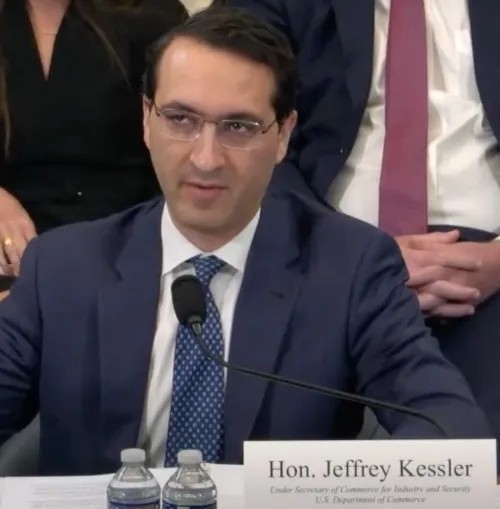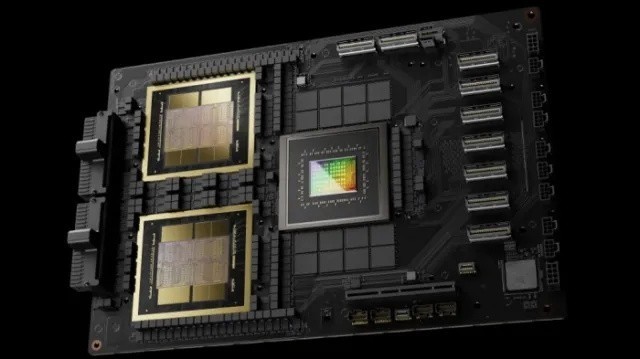发布时间:
The simmering technology rivalry between the United States and China over artificial intelligence(AI)chips has entered a critical new phase,marked by a recalibrated U.S.strategy,persistent challenges from illicit trade,and Taiwan’s deepening alignment with U.S.-led controls.
Recent statements from a top Commerce Department official,alarming reports of widespread chip smuggling,and strategic moves by Taiwan underscore the complex national security stakes in what many see as a zero-sum competition for global technological dominance.
Kessler’s calibrated message of progress and peril
Jeffrey Kessler,Under Secretary of Commerce for Industry and Security,articulated the new U.S.approach during his June 12,2025,testimony before the House Foreign Affairs Subcommittee on South and Central Asia.
In a hearing explicitly titled“Bureau of Industry and Security FY26 Budget:Export Controls and the AI Arms Race,”Kessler offered a dual message designed to project success while simultaneously justifying a significant increase in enforcement resources.
Kessler provided a specific assessment of Huawei’s indigenous AI chip production capacity for 2025,estimating it at“at or below 200,000”units,with most or all for companies within China.
Jeffrey Kessler(Source:Commerce Department)
The figure,he suggested,demonstrated the intended effect of stringent export controls in limiting China’s capabilities.
However,Kessler quickly qualified this assessment:“China is investing huge amounts to increase its AI chip production,as well as the capabilities of the chips that it produces.So,it’s critical for us not to have a false sense of security,to understand that China is catching up quickly.”
He added:“we shouldn’t take too much comfort in the fact that China’s production of these advanced chips is relatively small,because we know they have global ambitions.”
The message highlighted the dynamic nature of the challenge and built a case for the proposed 133%increase in BIS’s enforcement budget,arguing it was“necessary to manage a long-term threat.”
Smuggling undermines controls
Kessel’s timing was strategic,coming just one day after a report from the Center for a New American Security(CNAS)highlighted large-scale AI chip smuggling,providing external validation for his request.
Despite Washington’s efforts to restrict China’s access to advanced AI technology,a critical vulnerability persists:large-scale chip smuggling.The CNAS report indicates that illicit channels may have supplied China with as many as 140,000 advanced AI chips in 2024 alone,a scale that“significantly undermines”U.S.policy objectives.
Grace-Blackwell-Superchip(Source:Nvidia)
This pervasive smuggling reveals a critical enforcement gap,suggesting that the Bureau of Industry and Security(BIS)has been“severely under-resourced”to combat the problem.The estimated profits from just three reported smuggling cases in 2024 exceed BIS’s annual enforcement budget,highlighting the sheer scale of the challenge.
Smugglers employ simple but effective tactics to evade detection,such as“using overseas shell companies and mislabeling high-value semiconductor shipments as innocuous goods like tea or toys.”
Evidence of this illicit trade is readily available,with 132 online listings for export-controlled chips found on Chinese marketplaces.The prevalence of smuggling suggests that future U.S.strategy must address the“physical and logistical realities of global trade,not just the legal architecture of control,”contributing to a pivot towards more“aggressive,intelligence-driven enforcement.”
Tightening the screws from Taiwan
Last week,in a significant move reinforcing the U.S.-led export control regime,Taiwan added Huawei Technologies and Semiconductor Manufacturing International Corp(SMIC)to its Strategic High-Tech Commodities Entity List.
This decision directly“bars Huawei and SMIC from acquiring key semiconductor technologies from Taiwanese companies,”challenging China’s ambitions to rival U.S.chip producers like Nvidia.
Taiwan’s action aims to“further tighten existing loopholes and curb collaboration”between Chinese firms on the entity list and Taiwanese companies,complementing the series of export bans already imposed by the U.S.
This move also plays into the broader U.S.strategy of pressuring partners to align their policies with U.S.export restrictions,reflecting concerns about potential aid provided by Taiwanese companies to Huawei and SMIC’s chipmaking progress.
Despite the restrictions,Taipei’s new rule won’t deal an immediate“major blow”to Huawei or SMIC,mainly because these companies were“already facing significant constraints under previous curbs and had struggled with scaling up production.”Instead,Taiwan’s ban is an“important reinforcement”aiming to close remaining avenues for China to acquire advanced semiconductor technologies.
Strategic dilemma and diplomacy
“Chinese engineers are being flooded with state resources to innovate their way out of U.S.-imposed constraints on chip production,”wrote Reva Goujon,director at Rhodium Group on Foreign Affairs.“AI development is shifting away from maximization of computational power for training large-scale models and toward optimization to get pretrained models to generate more sophisticated responses to queries.”
The escalating competition forces the world towards“two distinct and increasingly incompatible technology ecosystems,”compelling businesses and nations to choose their alignment,wrote Andrés Ortega,senior research fellow at the Elcano Royal Institute.
The most alarming implication is the potential for geopolitical spillover.If China struggles to keep pace in chip development due to U.S.controls,and Beijing views these moves as an existential threat,the“technology war”could spill into the military sphere.
These actions could involve escalatory moves in areas like the Taiwan Strait,such as China establishing naval blockades of Taiwanese ports of entry,posing dramatic consequences for global semiconductor supply chains and the balance of power in the Indo-Pacific.
Narrowing the gap
With Huawei leading as a national champion,China has“heavily invested in developing its own Ascend series of AI chips as domestic alternatives to restricted U.S.GPUs.”
While Chinese chips are“one to two years behind U.S.counterparts,”China is making massive investments to close this gap.Huawei’s Ascend 910C processor,manufactured by SMIC,is“nearly as advanced as Nvidia’s H100 and A100 chips,”though Chinese production is less efficient than TSMC.
This determined push for self-sufficiency presents a significant“strategic dilemma”for U.S.policy.While policies seek to maintain a technological advantage,they simultaneously accelerate the creation of a fully independent and potentially formidable competitor in China.In the long term,the U.S.may foster a tech ecosystem in China that will no longer be subject to U.S.leverage.
The policy evolution also involves a shift toward a“knowledge-based”enforcement regime,which would place a“greater onus of due diligence on industry.”
Washington’s overarching strategy assumes it can preserve its hegemony through innovation and far-reaching controls.Still,this path increasingly risks blunter controls and less patience for partners not aligning with U.S.export restrictions.
AI primacy is a fundamental competition over whose vision of the world order will rule,with high-stakes wagers risking geopolitical combustion.


